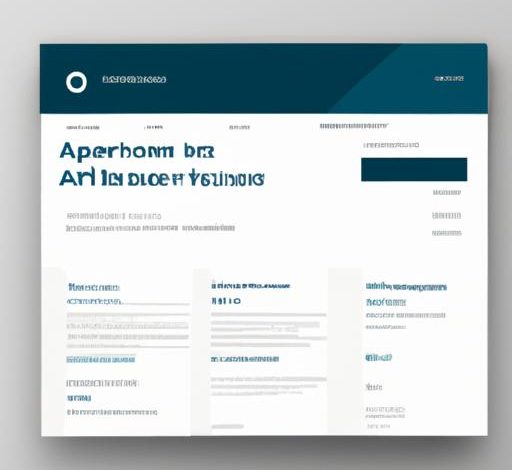Website Design for Financial Advisors: Enhancing Your Online Presence

Introduction
In the fast-paced digital world we live in, the need for financial advisors to have a strong online presence has never been more crucial. Your website is often the first point of contact for potential clients, making it essential to have a professional and engaging online platform. This is where website design plays a pivotal role in showcasing your expertise and services effectively.
As a financial advisor, your website is a reflection of your brand and credibility. A well-designed website not only attracts visitors but also instills trust and confidence in your services. It serves as a virtual storefront, offering a glimpse into your expertise and the value you provide to clients. With the right website design, you can set yourself apart from the competition and establish a strong online presence in the competitive financial services industry. Let’s delve deeper into the world of website design for financial advisors and explore how it can elevate your business to new heights.
Understanding the Target Audience
A. Identifying the Needs and Preferences of Financial Advisors’ Clients
To create an effective website for financial advisors, it is crucial to understand the specific needs and preferences of your target audience. By identifying what your clients are looking for in a financial advisor, you can tailor your website design to meet their expectations. Are they seeking retirement planning services, investment advice, or estate planning expertise? Understanding these needs will allow you to create relevant and engaging content that resonates with your audience.
B. Tailoring the Website Design to Attract and Engage Potential Clients
Once you have a clear understanding of your target audience, it’s time to tailor your website design to attract and engage potential clients. This involves creating a user-friendly interface, clear navigation, and compelling visuals that showcase your services effectively. By incorporating elements that speak directly to your audience’s needs and preferences, you can create a website that not only attracts visitors but also converts them into valuable clients. Remember, your website is the first impression potential clients will have of your services, so make it count.
Key Elements of an Effective Website Design
A. User-friendly Navigation and Layout
When it comes to website design for financial advisors, user-friendly navigation and layout are paramount. Your website should be easy to navigate, allowing visitors to find the information they need quickly and effortlessly. Clear menu structures, intuitive navigation bars, and logical page layouts contribute to a seamless user experience, keeping visitors engaged and encouraging them to explore further.
B. Clear and Concise Messaging
In the world of finance, clarity is key. Your website’s messaging should be clear, concise, and easy to understand. Avoid using jargon or complex terminology that may confuse visitors. Clearly communicate your services, expertise, and value proposition in a way that resonates with your target audience. By delivering your message in a straightforward and accessible manner, you can effectively engage visitors and convey the unique benefits of working with you.
C. High-Quality Visuals and Graphics
Visual appeal plays a crucial role in website design. High-quality visuals and graphics not only enhance the aesthetic appeal of your website but also help in conveying your brand identity and values. Utilize professional images, infographics, and videos to create a visually engaging experience for visitors. Visual content can help to captivate your audience, communicate complex ideas effectively, and leave a lasting impression on visitors.
D. Mobile Responsiveness
In today’s mobile-centric world, ensuring that your website is mobile responsive is non-negotiable. With a significant portion of web traffic coming from mobile devices, it’s essential that your website adapts seamlessly to different screen sizes and devices. A mobile-responsive design enhances user experience, improves accessibility, and boosts your website’s search engine rankings. By optimizing your website for mobile, you can reach a wider audience and provide a consistent experience across all devices.
E. SEO Optimization for Improved Visibility
Search engine optimization (SEO) is a critical component of effective website design for financial advisors. By implementing SEO best practices, you can improve your website’s visibility in search engine results and attract organic traffic. Conduct keyword research, optimize meta tags, headers, and content, and build high-quality backlinks to enhance your website’s search engine rankings. A well-optimized website increases your online visibility, drives targeted traffic, and positions you as a trusted authority in the financial advisory space.
Incorporating Trust-Building Elements
A. Testimonials and Client Reviews
Building trust with potential clients is essential for financial advisors, and one of the most effective ways to do so is through testimonials and client reviews. Testimonials provide social proof of your expertise and the positive experiences clients have had working with you. By showcasing real-life success stories and feedback from satisfied clients, you can establish credibility and build trust with new visitors to your website.
B. Professional Certifications and Affiliations
Displaying your professional certifications and affiliations on your website is another powerful trust-building element for financial advisors. Certifications and affiliations demonstrate your commitment to upholding industry standards and staying current with best practices. They serve as a stamp of approval that reassures clients of your expertise and professionalism, setting you apart as a trusted and reputable advisor in the financial industry.
C. Secure Payment Gateways and Data Protection Measures
In today’s digital age, online security is a top concern for consumers, especially when it comes to financial transactions. By incorporating secure payment gateways and robust data protection measures on your website, you can instill confidence in clients that their sensitive information is safe and secure. This not only builds trust but also helps you comply with industry regulations and standards, further enhancing your reputation as a trustworthy financial advisor.
Strategies for Driving Traffic and Generating Leads
A. Implementing Content Marketing Strategies
In the realm of financial services, content is king. By creating valuable and informative content that resonates with your target audience, you can establish yourself as a thought leader in the industry. Whether it’s blog posts, whitepapers, or case studies, quality content can attract visitors to your website and keep them engaged. By addressing common pain points and providing solutions through your content, you can build credibility and trust with potential clients.
B. Utilizing Social Media and Email Marketing Campaigns
Social media platforms offer a powerful way to connect with your audience and drive traffic to your website. By sharing relevant content, engaging with followers, and participating in industry discussions, you can expand your reach and attract new leads. Similarly, email marketing campaigns can be a valuable tool for nurturing leads and converting them into clients. Personalized emails, newsletters, and updates can keep your audience informed and engaged, ultimately leading to conversions and increased business opportunities.
C. Incorporating Call-to-Action Buttons and Contact Forms
To convert website visitors into leads, it’s essential to guide them towards taking action. Call-to-action buttons strategically placed throughout your website can prompt visitors to schedule a consultation, download a resource, or subscribe to your newsletter. Additionally, contact forms provide an easy way for potential clients to reach out and inquire about your services. By making it simple and convenient for visitors to take the next step, you can enhance user experience and drive lead generation effectively.
Conclusion
In conclusion, website design for financial advisors is not just about creating a visually appealing platform; it’s about establishing a powerful online presence that resonates with your target audience. By understanding the needs and preferences of your clients and incorporating key elements such as user-friendly navigation, compelling content, and trust-building elements, you can create a website that not only attracts but also converts visitors into clients.
Remember, your website is your digital storefront, your virtual handshake with potential clients. It’s essential to invest in a professional website design that reflects your expertise, instills trust, and drives growth for your financial advisory business. By following the strategies outlined in this article and continuously updating and optimizing your website, you can stay ahead of the curve and position yourself as a trusted advisor in the digital landscape. Embrace the power of website design and watch your business thrive in the competitive world of financial services.
Conclusion: So above is the Website Design for Financial Advisors: Enhancing Your Online Presence article. Hopefully with this article you can help you in life, always follow and read our good articles on the website: finance.mienail.com



